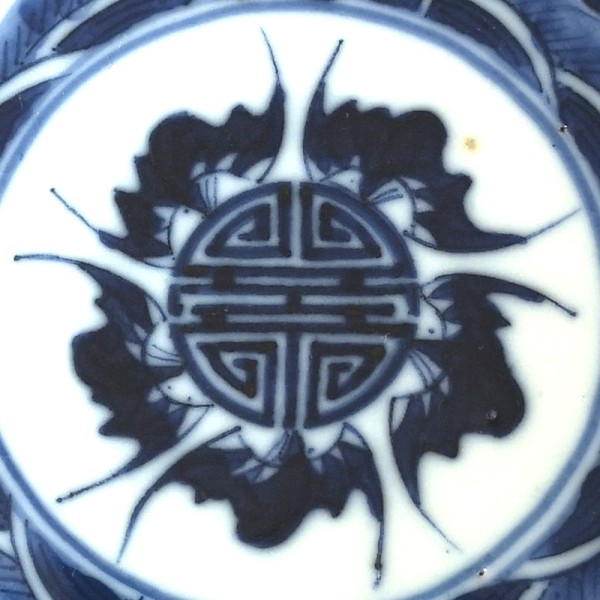
In this decoration five bats surrounding a stylized shou (long life) character five bats are drawn to illustrate 'the five blessings', that in Chinese literati culture are Longevity, wealth, health, virtuousness, and a peaceful end.
In Chinese culture, many objects and symbols are homophonic, meaning they have the same sound, but different meanings. This phenomena proliferate in the Qing dynasty decorative arts, often in the form of single objects but occasionally as groups of several objects, so much so that some decorations could be read as virtual rebuses.
Examples of homophonic objects are:
In Chinese porcelain decorations, bats for example are often depicted as a symbol of happiness, because the word for "bat" (蝠, fú) sounds similar to the word for "happiness" (福, fú). Similarly, other animals or objects may also be used in decorations for their same sounding associations. For example, the word for "fish" (鱼, yú) sounds like the word for "surplus" (余, yú), so fish may be used in decorations to symbolize abundance and wealth.
In addition to using symbols with homophonic associations a large number of other shapes, colors, symbols and images carries meanings that might be hidden to the occasional viewer. One example are flowers that formed into a boquet may also form a sentence or a blessing. For example, a bouquet of peonies (牡丹, mǔdān) and lotus (荷花, héhuā) may be used to represent the phrase "May you have a harmonious and prosperous family" (家和万事兴, jiā hé wànshí xīng).
A